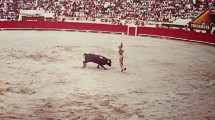Abstract
The study was conducted to determine the characteristics of child victims of dog bite accidents. Pediatricians and nurses prospectively collected standardized information on all child victims of dog bites brought in for treatment to six hospital emergency departments (three urban university teaching hospitals and three rural hospitals). One hundred completed questionnaires were collected and analyzed. The frequency of dog bites brought for care to the emergency departments was equivalent to about one-quarter of all road traffic casualties and one-third of burns at home. Of the 100 victims, 65 were bitten at home, and 35 in a public place. The bite accidents that occurred at home concerned children with a median age of 5 years, who were without adult supervision at the time of the accident. The children who were bitten by dogs in public places had a median age of 9 years. For 77 bites, the dog was not familiar to the child. Based on the history, it appeared that 56 out of 65 accidents at home and 11 out of 35 in public places resulted mainly from the children's or adult's behavior. Conclusion: To reduce the frequency of dog bites both at home and in public places, education could be the preventive measure with the highest priority. Out of 100 accidents, 67 children might not have been bitten had they and their parents been adequately educated on safe conduct towards dogs.
Similar content being viewed by others
References
American Veterinary Medical Association (2001) A community approach to dog bite prevention. J Am Vet Med Ass 218: 1732–1749
Association Belge pour Identification et Enregistrement des Chiens (2002) Rapport Annuel
Borud LJ, Friedman DW (2000) Dog bites in New York City. Plast Reconstr Surg 106: 987–990
Chapman S, Cornwall J, Righetti J, Sung L (2000) Preventing dog bites in children: randomised controlled trial of an educational intervention. BMJ 320: 1512–1513
Chun YT, Berkelhamer JE, Herold TE (1982) Dog bites in children less than 4 years old. Pediatrics 69: 119–120
De Keuster T, De Meester R (2000) Cabinet de la Ministre de la Protection de la Consommation, de la Santé et de l'Environnement. Symposium Problématique des chiens agressifs : l'approche multifactorielle. Brussels, pp 1–17
Ethologia (2001) N'aie pas peur du gros chienhttp://users.skynet.be/ethologia/home fr.htm
Filiatre JC, Eckerlin A, Millot JL, Estavoyer JM, Meyer JP (1990) Les agressions d'enfants par les chiens : étude préliminaire des facteurs de risque. Ann Pédiatr 37: 162–166
Kern L (1999) Contribution à l'étude des relations hyérarchiques entre l'enfant et le chien. Mémoire de diplôme de vétérinaire comportementaliste des Ecoles Vétérinaires Françaises
Love M, Overall KL (2001) How anticipating relationships between dogs and children can help prevent disasters. J Am Vet Med Assoc 219: 446–453
Malandrucco L, Berti P, Vergati P (2001) Biting animals in Rome. 9th International Conference, Rio de Janeiro. Abstract Book, 109
Overall K, Love M (2001) Dog bites to humans: demography, epidemiology, injury and risk. J Am Vet Med Assoc 218: 1923–1934
Ozanne-Smith J, Ashby K, Stathakis VZ (2001) Dog bite and injury prevention analysis, critical review, and research agenda. Injury Prevention 7: 321–326
Rajecki DW, Rasmussen JL, Modlin SJ, Holder AM (1998) Dog bites boy: judgments of blame and shame. Anthrozoös 11: 66–73
Sacks JJ, Sinclair L, Cilchrist J, Golab GC, Lockwood R (2000) Breeds of dogs involved in fatal human attacks in the United States between 1979 and 1998. J Am Vet Assoc 217: 836–840
Système Canadien Hospitalier d'Information et de Recherche en Prévention des Traumatismes (2001) Blessures associées aux morsures et attaques de chien. http//www.hc-sc.gc.ca/hpb/lcdc/brch/injury/dogbit_f.html
Van Der Wijk J, Klasen HJ (1981) Hondebeten en de omstandigheden waaronder ze voorkomen. Ned T Geneesk 125: 133–136
Voelker R (1997) Dog bites recognized as public health problem. JAMA 277: 278–280
Weiss HB, Friedman DI, Coben JH (1998) Incidence of dog bite injuries in emergency departments. JAMA 279: 51–53
Author information
Authors and Affiliations
Consortia
Corresponding author
Additional information
The Dog Bites Research Team consists of the following members: J. Bollan, D. Caudron, T. De Keuster, M.H. De Laet, M. Delwart, M. Demay, A. De Mey, D. Detemmerman, M. Dirix, B. Duvivier, C. Guénier, M. Hort, L. Kirsch, F. Lebrun, J. Levy, A. Lhomme, M. Libert, C. Peltier, F. Peters, JP Sacre, A.M. Tomat, P. Vincke
Rights and permissions
About this article
Cite this article
Kahn, A., Bauche, P., Lamoureux, J. et al. Child victims of dog bites treated in emergency departments: a prospective survey. Eur J Pediatr 162, 254–258 (2003). https://doi.org/10.1007/s00431-002-1130-6
Received:
Accepted:
Published:
Issue Date:
DOI: https://doi.org/10.1007/s00431-002-1130-6




